Are you curious if those half dollar coins jingling in your pocket or tucked away in a jar could be worth more than just fifty cents? Many people are surprised to learn that certain half dollar coins, particularly Kennedy Half Dollars, can hold significant value for collectors.
If you’re wondering whether you might have a hidden gem, you’ve come to the right place. This guide, brought to you by the money experts at money-central.com, dives deep into the world of valuable half dollar coins, focusing on the Kennedy series. We’ll explore which Kennedy half dollars are worth money, highlighting the key dates, mint marks, and conditions that can transform a common coin into a prized collectible.
While Kennedy half dollars are generally widespread and inexpensive, a select few, due to their rarity and historical significance, can command impressive prices. Let’s embark on this numismatic journey to uncover the treasures hidden within Kennedy half dollars and discover which ones are truly worth money.
The Kennedy Half Dollar: A Legacy in Coinage
The Kennedy Half Dollar was first introduced by the United States Mint in 1964, a poignant tribute to the assassinated President John F. Kennedy. Its swift creation, just months after Kennedy’s death, replaced the Benjamin Franklin half dollar and immediately captured the nation’s sentiment.
Initially, these half dollar coins were struck from 90% silver and 10% copper, reflecting the precious metal content of the time. However, due to a silver shortage, the coin’s composition was altered from 1965 to 1970. During this period, Kennedy half dollars were made with a 40% silver composition (specifically, a 79% copper core with an outer layer of 80% silver and 20% copper).
From 1971 onwards, a significant change occurred. Half dollar coins transitioned to a copper-nickel clad composition, consisting of 75% copper and 25% nickel bonded to a core of pure copper. This composition remains in use for circulating half dollars today.
The iconic design of the Kennedy half dollar has remained remarkably consistent since its inception. The obverse proudly displays a left-facing portrait of President Kennedy, while the reverse features the heraldic eagle, a powerful symbol of the United States, clutching an olive branch and arrows, representing peace and defense respectively.
Kennedy half dollars were minted at the Philadelphia, Denver, and San Francisco Mint facilities. In its inaugural year, 1964, production was massive, with over 156 million coins struck. However, from 2002, the Mint significantly reduced production, primarily striking Kennedy half dollars for collectors, available for purchase at face value.
A notable event occurred in 1992 when the Mint introduced special 90% silver proof Kennedy half dollars specifically for collectors. Further expanding collector options, in 1998, 90% silver half dollars were issued in both matte and brilliant proof finishes.
One of the most famous and sought-after varieties is the 1964 Accented Hair Kennedy Half Dollar. These early coins featured a more pronounced and detailed hairstyle for President Kennedy. However, Jacqueline Kennedy reportedly preferred a softer appearance, leading the Mint to modify the design. While changes were implemented, a limited number of “Accented Hair” proof coins had already been produced, making them a key collectible.
In 2022, responding to demand from the Federal Reserve after more than two decades of limited circulation strikes, the Mint increased production of Kennedy half dollars for general circulation. Today, modern Kennedy half dollars are readily available. However, for collectors seeking value, the silver Kennedy half dollars struck between 1964 and 1970 are generally considered the most desirable.
Let’s now delve into the specifics and explore the Kennedy half dollars that are particularly worth money, examining the factors that contribute to their increased value.
Unveiling the Most Valuable Kennedy Half Dollars
1. 1964 Special Strike Kennedy Half Dollar
The 1964 Special Strike Kennedy Half Dollar stands out as an exceptional rarity within the series, excluding error coins. These coins possess distinct characteristics setting them apart from regular strikes of the same year.
Identifying a 1964 special strike half dollar involves looking for a satiny or matte-like finish, remarkably sharp details on both the obverse and reverse designs, and exceptionally well-defined and squared-off rims.
Crucially, these special strike coins typically exhibit minimal to no contact marks, suggesting meticulous minting and careful preservation. Unlike proof coins which have a mirror-like finish, the Kennedy half-dollar special strike displays a matte finish, often with subtle die-polishing lines visible under magnification.
The Professional Coin Grading Service (PCGS) has certified only a handful of 1964 Special Strike Kennedy Half Dollars, underscoring their extreme rarity. This designation makes them the most elusive of the 1964 special strike coins.
In the realm of numismatic auctions, a 1964 Kennedy half-dollar special strike graded SP68 by PCGS achieved a remarkable $156,000 at a Stack’s Bowers Galleries auction, demonstrating the significant value collectors place on these rare specimens.
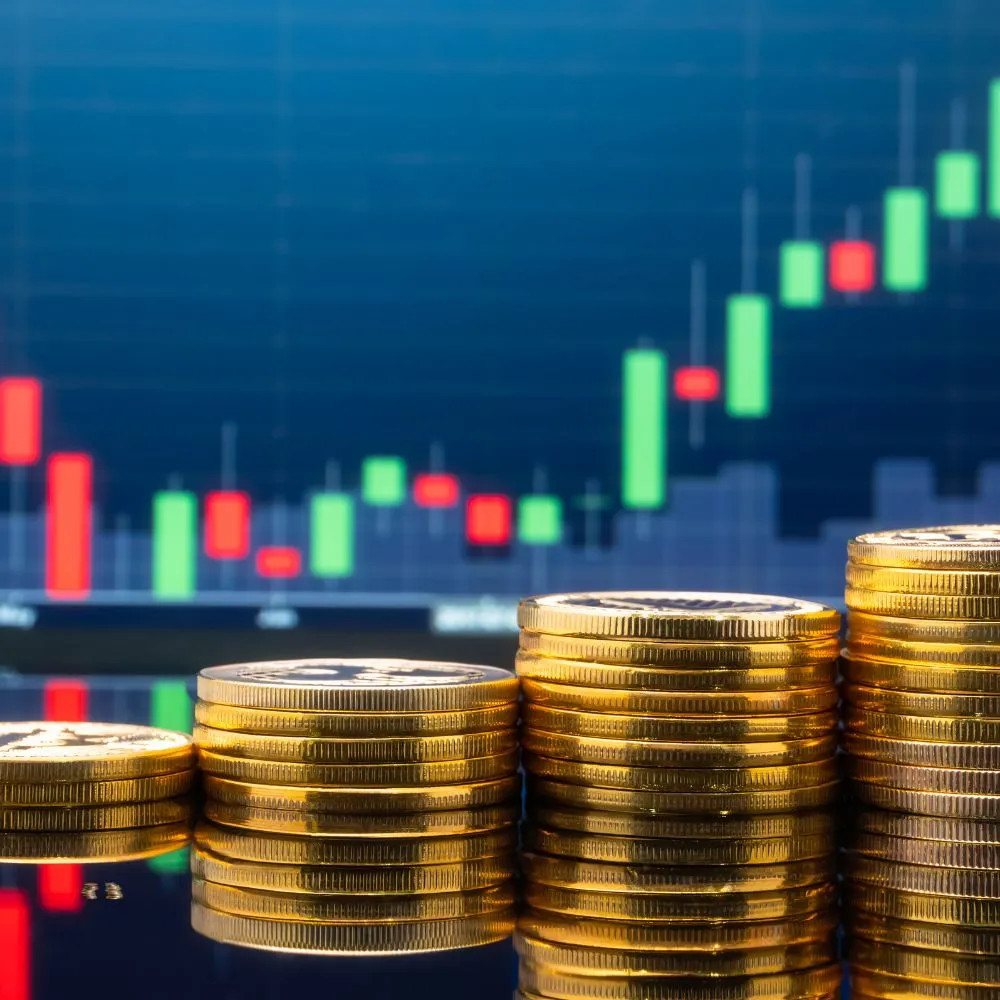 Close up image of a coin appraiser examining coins
Close up image of a coin appraiser examining coins
Get a FREE Coin Appraisal
Unsure about the value of your coins? Our verified platform offers free coin appraisals and a streamlined process to sell your coins if desired.
Appraise and Sell Your Coins for Free
2. 1968-S Proof Kennedy Half Dollar
Proof Kennedy half dollars, distinguished by their sharp strikes and mirror-like surfaces, were reintroduced in 1968 after a brief hiatus. These 1968 proofs bear the “S” mint mark, indicating their production at the San Francisco Mint. Prior to 1968, proof Kennedy half dollars were only struck in 1964 at the Philadelphia Mint.
The 1968-S Proof Kennedy Half Dollars generally exhibit superior quality compared to the 1964 proofs. Consequently, many surviving examples are found in higher grades. While cameo contrast (the difference between mirrored fields and frosted devices) is common, deep cameo examples, with a particularly strong contrast, are considerably rarer and command higher premiums.
A particularly exceptional 1968-S Proof Kennedy Half Dollar, graded PF70 Deep Cameo by PCGS, realized a price of $21,600 at a 2017 Heritage Auctions sale, illustrating the significant value of top-grade, deep cameo examples.
3. 1964 Proof Kennedy Half Dollar
The 1964 Proof Kennedy Half Dollar holds the distinction of being the inaugural proof coin in the series. Struck at the Philadelphia Mint, these coins, while proofs, often exhibit a somewhat less refined finish compared to later proof issues.
Cameo and deep cameo examples of the 1964 proof are exceptionally scarce. However, proofs graded PF68 and lower are generally more accessible to collectors. As anticipated, cameo and particularly deep cameo examples can be quite valuable due to their rarity and visual appeal.
A noteworthy example is a 1964 Proof Kennedy Half Dollar graded PF70 by PCGS, which sold for $9,400, highlighting the premium placed on coins in perfect condition, even for more readily available dates in lower grades.
4. 1964 Accented Hair Proof Kennedy Half Dollar
The 1964 Accented Hair Kennedy Half Dollar is arguably the most renowned variety within the entire Kennedy half dollar series. This design was initially used for striking the 1964 proof coins.
The defining characteristic of the “Accented Hair” variety is the presence of extra, more prominent hair detail above President Kennedy’s ear. In contrast, regular 1964 Kennedy half dollars intended for circulation feature softer and less defined hair. Another distinguishing feature of the Accented Hair proof is the absence of a serif on the left side of the letter “I” in “LIBERTY.”
The Accented Hair proof design was used for only a brief period before being replaced by the modified, softer hair design. This limited production period makes the 1964 Accented Hair Proof significantly rarer than the standard 1964 circulation half dollar. It’s estimated that less than 5% of the 1964 proof coins struck feature the Accented Hair design.
A typical Accented Hair proof in a grade of PR69 or higher can command prices upwards of $3,100. Cameo and deep cameo examples are even more elusive and valuable. A deep cameo example graded PF68 by PCGS reached a price of $19,975 at auction, demonstrating the strong demand for these rare and historically significant varieties.
5. 1976-D Kennedy Half Dollar
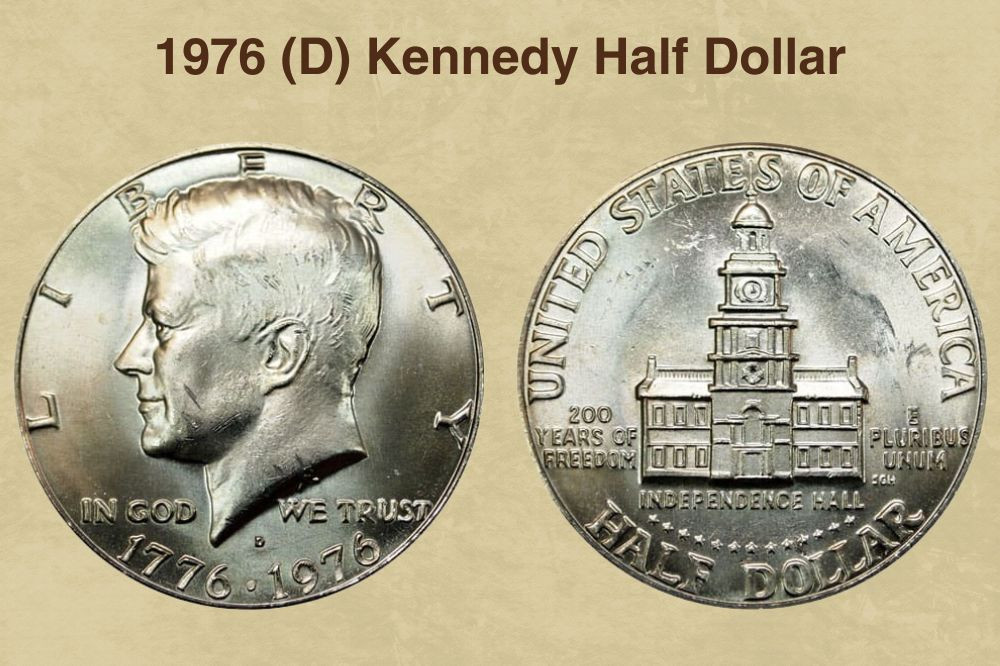 Image of a 1976-D Kennedy Half Dollar, showcasing the bicentennial design
Image of a 1976-D Kennedy Half Dollar, showcasing the bicentennial design
The Denver Mint produced a substantial quantity of Kennedy half dollars in 1976, exceeding 200 million coins. This high mintage makes the 1976-D Kennedy Half Dollars very common and easily found in circulation. Most examples encountered in pocket change or coin jars will typically be worth only their face value of fifty cents.
The 1976 Kennedy half dollar was a special one-year issue, released during the United States Bicentennial. Due to the bicentennial celebration, many individuals collected and hoarded these coins, mistakenly believing they would become inherently valuable. Despite this widespread hoarding, the sheer volume produced ensured that many 1976 Kennedy half dollars remained in circulation, retaining only their face value for circulated examples.
However, as you move up the grading scale to uncirculated mint state conditions, particularly MS64 and higher, the population of available 1976-D Kennedy Half Dollars starts to decrease. Examples graded MS67 and above are genuinely rare, with fewer than a dozen certified specimens known to exist.
An exceptional 1976-D Kennedy Half Dollar, certified as “GENUINE” by PCGS, achieved an impressive $10,000 in a 2021 online auction. This sale underscores the significant value that can be attained by even relatively modern coins when found in exceptional, high-grade condition.
6. 1971-D Kennedy Half Dollar
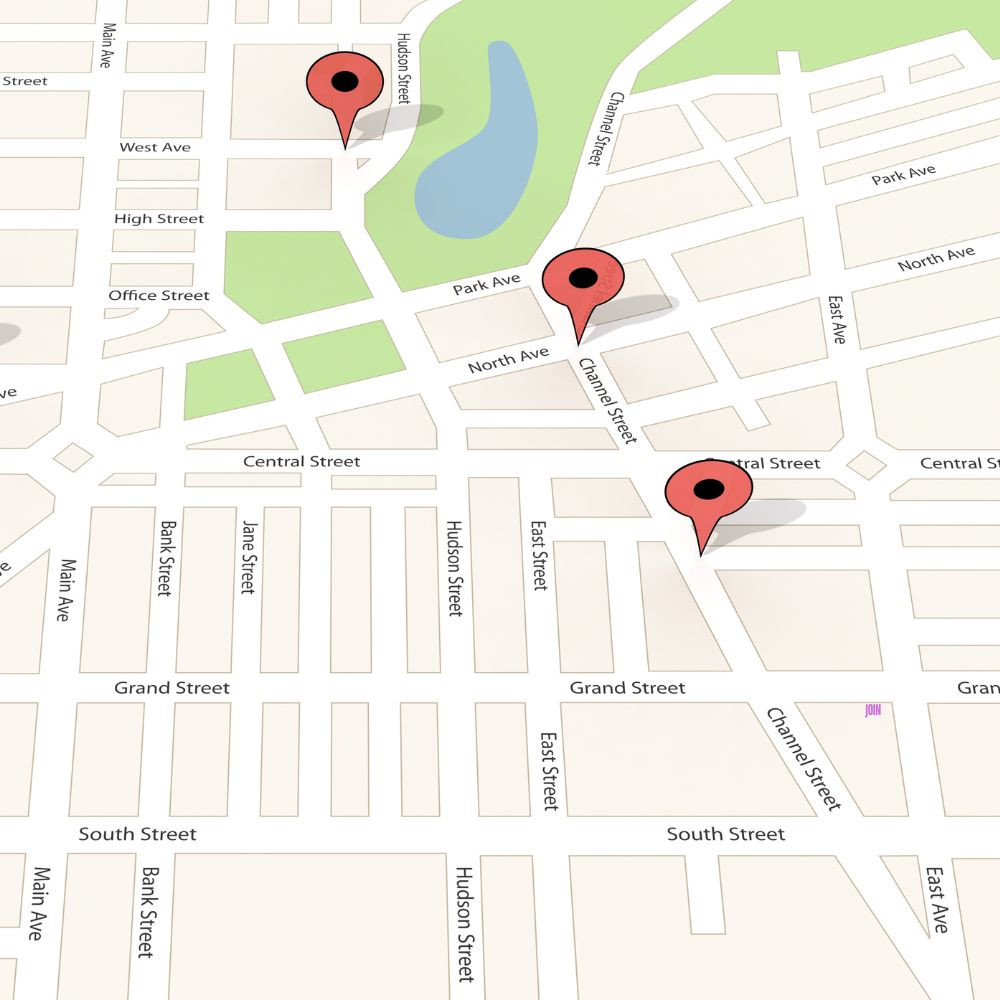 Image showcasing a coin dealer potentially examining or purchasing coins
Image showcasing a coin dealer potentially examining or purchasing coins
Find the Best Coin Dealers Near You
Looking for reputable coin dealers in your area? We can help you connect with top-rated dealers, complete with customer reviews and ratings.
Find a Reputable Coin Dealer Near Me
The year 1971 marks a significant transition in the history of Kennedy half dollars. It was in 1971 that the Mint officially changed the metallic composition from 40% silver to the copper-nickel clad composition used today.
Millions of 1971-D Kennedy Half Dollars were struck at the Denver Mint, making them quite common in circulated grades. These coins are frequently encountered in home coin collections and banks, and circulated examples typically hold only their face value.
The value of 1971-D Kennedy Half Dollars starts to appreciate significantly in higher uncirculated grades, specifically MS67 and above. These coins become notably scarce in high mint state grades, with fewer than 500 examples estimated to exist in MS67 condition. In grades exceeding MS68, the 1971-D Kennedy Half Dollar becomes exceedingly rare, and any examples discovered in these grades would be exceptionally valuable.
Despite its commonality in circulated grades, the most valuable 1971-D Kennedy Half Dollar recorded was graded MS61 by PCGS and sold for an impressive $13,000 in a 2018 eBay auction. This seemingly contradictory high price for a relatively low grade highlights the unpredictable nature of the rare coin market and the potential for surprises.
7. 1969-D Kennedy Half Dollar
The 1969-D Kennedy Half Dollar, struck during the period of 40% silver composition, contains a reduced silver content compared to the earlier 90% silver issues. Copper makes up the remaining portion of the coin’s metallic makeup.
This particular issue is relatively common in circulated condition, with examples in lower grades generally worth close to their face value. Similar to other silver Kennedy half dollars minted between 1965 and 1970, collectors widely hoarded 1969 Kennedy half dollars, anticipating potential future value increases due to their silver content.
Because many newly minted 1969-D coins were removed from circulation and saved, it is still possible to find examples in uncirculated mint state conditions. However, starting at grade MS65, the population of available coins begins to decrease, and by MS67, examples become exceptionally difficult to find, with fewer than 50 known to exist in this high grade.
In 2017, a collector paid $15,600 at auction for a 1969-D Kennedy Half Dollar graded MS67 by PCGS, making it the most expensive example from this date known to date. This price reflects the rarity and desirability of high-grade examples of this key date coin.
8. 1966 No Mint Mark Kennedy Half Dollar (Philadelphia)
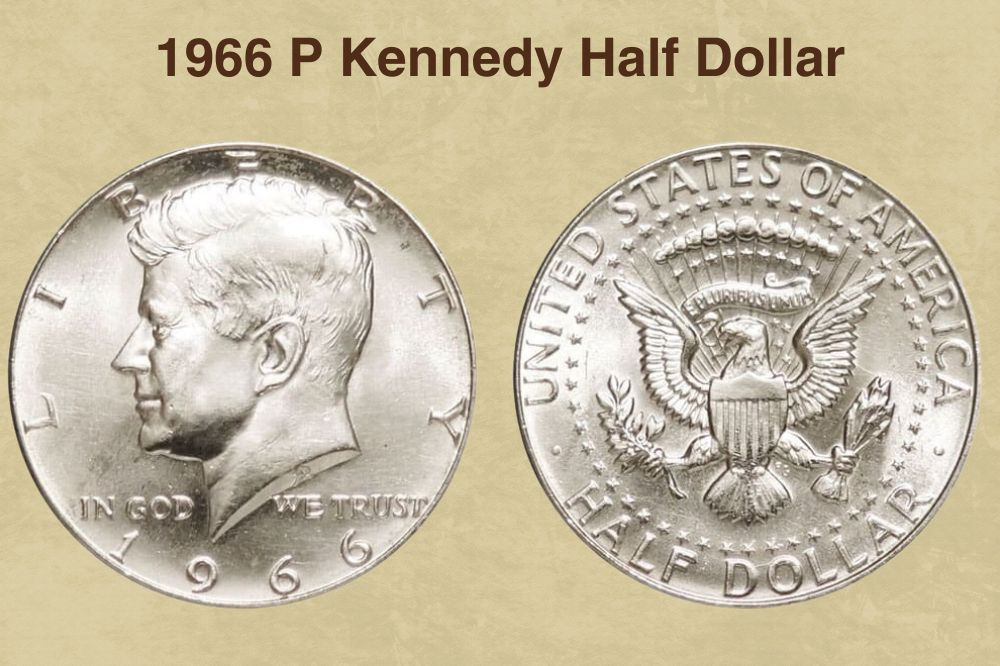 Image of a 1966 P Kennedy Half Dollar coin, showcasing its design and details
Image of a 1966 P Kennedy Half Dollar coin, showcasing its design and details
The 1966 Kennedy Half Dollar, produced at the Philadelphia Mint (indicated by the absence of a mint mark), has one of the lowest mintages within the 40% silver-clad series struck between 1965 and 1970.
Half dollars from 1966 are relatively common in lower mint state grades. However, their availability decreases significantly as you ascend the grading scale. There are fewer than 200 known examples graded MS66 by PCGS, and fewer than 15 certified examples in grade MS67 and above.
Finding a 1966 No Mint Mark Kennedy Half Dollar in gem uncirculated condition would be considered a lucky find for any collector. It is worth noting that half dollars produced at the Philadelphia Mint during this era were generally of slightly lower quality compared to those minted in Denver and San Francisco.
The most valuable 1966 No Mint Mark Kennedy Half Dollar recorded was graded MS67 by PCGS and sold for $15,100 in a 2020 eBay auction, demonstrating the substantial value that can be associated with high-grade examples of this relatively low-mintage issue.
9. 1977 Kennedy Half Dollar
By the late 1970s, the striking quality and overall production standards at the U.S. Mint had generally improved. As a result, it is comparatively more common to encounter 1977 Kennedy Half Dollar examples in higher uncirculated grades, such as MS66 and MS67.
Coins graded MS68 to MS70 are also obtainable, although finding them may require more dedicated searching as fewer than 200 specimens have been certified by PCGS across these top grades.
If you happen to find a 1977 Kennedy Half Dollar graded MS64 or higher, consider yourself fortunate, as these are the most valuable examples from that year. One exceptional example graded MS67 by PCGS fetched $9,200 at a 2005 Bowers and Merena auction, highlighting the potential value even for non-silver, later-date Kennedy half dollars in exceptional condition.
10. 1970-D Kennedy Half Dollar
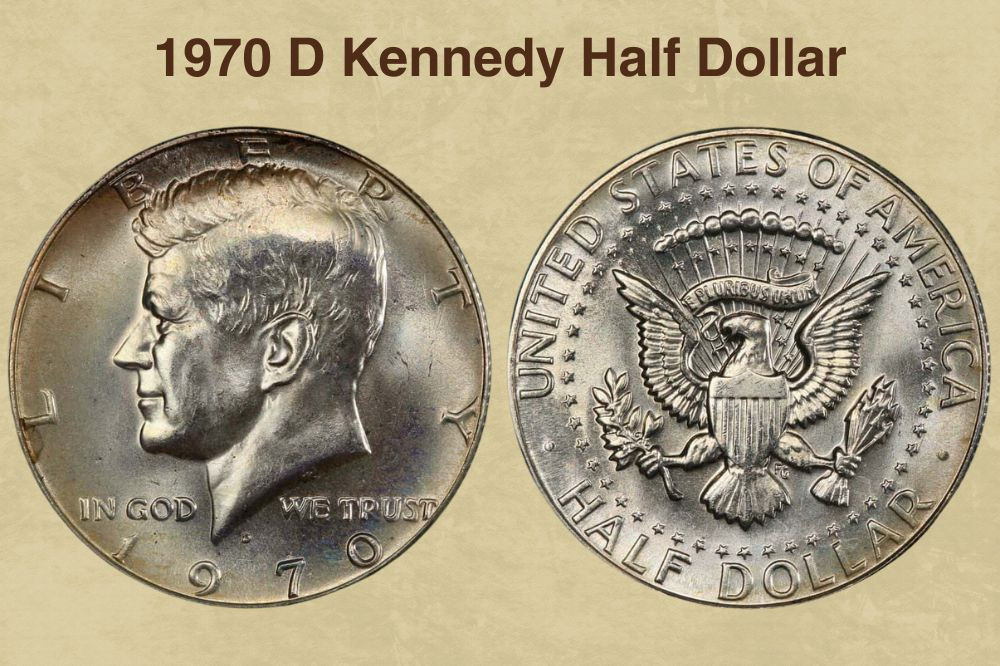 Image of a 1970-D Kennedy Half Dollar, highlighting its mint mark
Image of a 1970-D Kennedy Half Dollar, highlighting its mint mark
Get a FREE Coin Appraisal Today
Curious about the potential value of your coins? Our free appraisal platform makes it easy to discover what your coins might be worth and offers options for selling if you choose.
Click Here for Your Free Coin Appraisal & Selling Options
The 1970-D Kennedy Half Dollar holds a unique position in the series due to its limited availability to the general public. These coins were exclusively produced for inclusion in Mint Sets sold directly to collectors and were not released for general circulation. With a mintage of approximately 2.1 million coins, the 1970-D Kennedy Half Dollar boasts the lowest business strike mintage for the Kennedy half dollar series from 1964 to 2005.
The Denver Mint was the sole facility that produced business strike Kennedy half dollars in 1970. Meanwhile, the San Francisco Mint struck the proof versions, bearing the “S” mint mark.
1970 also marks a significant year as it was the last time the U.S. Mint produced business strike Kennedy half dollars with any silver content. Silver proofs would later make a comeback in 1992, but business strikes remained in clad composition.
The most valuable 1970-D Kennedy Half Dollar recorded sold for $7,495 in a 2023 online auction, emphasizing the strong collector demand for this key date, low-mintage coin.
11. 1970-S Proof Kennedy Half Dollar
The San Francisco Mint produced approximately 2.6 million 1970-S Proof Kennedy Half Dollars. As proof coins, these were not intended for circulation and were primarily sold to collectors. Distribution was somewhat limited, meaning only dedicated collectors and coin-related businesses were likely to acquire these 1970-S proof half dollars directly from the Mint.
Examples in grades PF67 and above are relatively readily obtainable compared to business strikes of the same era. The historical significance of 1970 as the last year for silver proof Kennedy half dollars for two decades (production resumed in 1992) elevates the 1970-S to a key date within the Kennedy half dollar series.
The highest price realized for a 1970-S Proof Kennedy Half Dollar is $7,475, paid in a 2007 Heritage Auctions sale for a specimen graded PF67 by PCGS. This price reflects the desirability of proof examples and the key date status.
12. 1980-D Kennedy Half Dollar
The Denver Mint struck an estimated 33 million 1980-D Kennedy Half Dollars. Coins originating from the Denver facility during this period generally exhibited higher striking quality compared to those from Philadelphia.
Given the relatively high mintage, the 1980-D Kennedy Half Dollar is easily found in circulated condition and holds minimal value beyond face value in lower grades. However, the population of available coins decreases noticeably at the MS66 grade level. Most uncirculated examples are typically found within Mint Sets or unopened original bank rolls.
This coin becomes particularly challenging to locate in higher mint state grades. At MS67, fewer than 100 examples are estimated to exist, and the population dwindles further in MS68 and higher, with likely fewer than a dozen specimens known to exist.
In 2015, a collector paid $9,835 for a 1980-D Kennedy Half Dollar graded MS68 by PCGS. This significant price demonstrates the substantial premium placed on even more common date coins when found in exceptional, top-tier condition.
 Image showcasing a coin dealer potentially examining or purchasing coins
Image showcasing a coin dealer potentially examining or purchasing coins
Find Reputable Coin Dealers in Your Area
Looking to buy or sell coins? We can help you locate and connect with the best coin dealers near you, complete with customer reviews and ratings to help you make informed decisions.
Locate a Top-Rated Coin Dealer Near You
13. 1976-S Silver Bicentennial Kennedy Half Dollar
In 1976, to commemorate the 200th anniversary of American independence, the U.S. Mint issued a special set of Bicentennial coins. This set included the Eisenhower dollar, Kennedy half dollar, and Washington quarter, all featuring a dual date of “1776-1976” and unique reverse designs for this one-year issue.
For the Kennedy half dollar, the Mint produced several varieties in 1976: three different circulation strike versions and two proof versions. Besides the 1776-1976 Bicentennial design, the circulation strikes included clad 1976-P and 1976-D Bicentennial Kennedy Half Dollars.
In addition to the standard clad composition coins intended for circulation, the Mint also struck a 40% silver proof 1976-S Bicentennial Kennedy Half Dollar and a clad proof version.
Unlike the silver proof 1976-S Bicentennial half dollar, which was primarily sold to collectors, the clad versions were released into general circulation. This widespread circulation makes uncirculated mint state examples of the clad versions relatively harder to find compared to the silver proofs.
A rare MS69-graded 1976-S silver proof Bicentennial Kennedy Half Dollar achieved an impressive $9,600 in a 2022 auction, demonstrating the value of high-grade examples, particularly in silver proof format, of this commemorative issue.
In Summary: Are Your Half Dollar Coins Worth Money?
Kennedy half dollars are a common sight, and the vast majority encountered in everyday transactions will hold only their face value. However, as we’ve explored, certain key dates, mint marks, and varieties can transform these seemingly ordinary coins into valuable collectibles.
In particular, the 1964 Accented Hair variety and the exceptionally rare 1964 Special Strike Kennedy Half Dollar are highly sought after by collectors. Beyond these, the Bicentennial issues, the 1966 No Mint Mark (Philadelphia), and the 1970-S and 1970-D Kennedy Half Dollars are also capable of commanding significant prices, especially when found in uncirculated or proof conditions.
So, the next time you come across a half dollar coin, take a closer look! It might just be one of these valuable Kennedy half dollars worth money.
50 shares